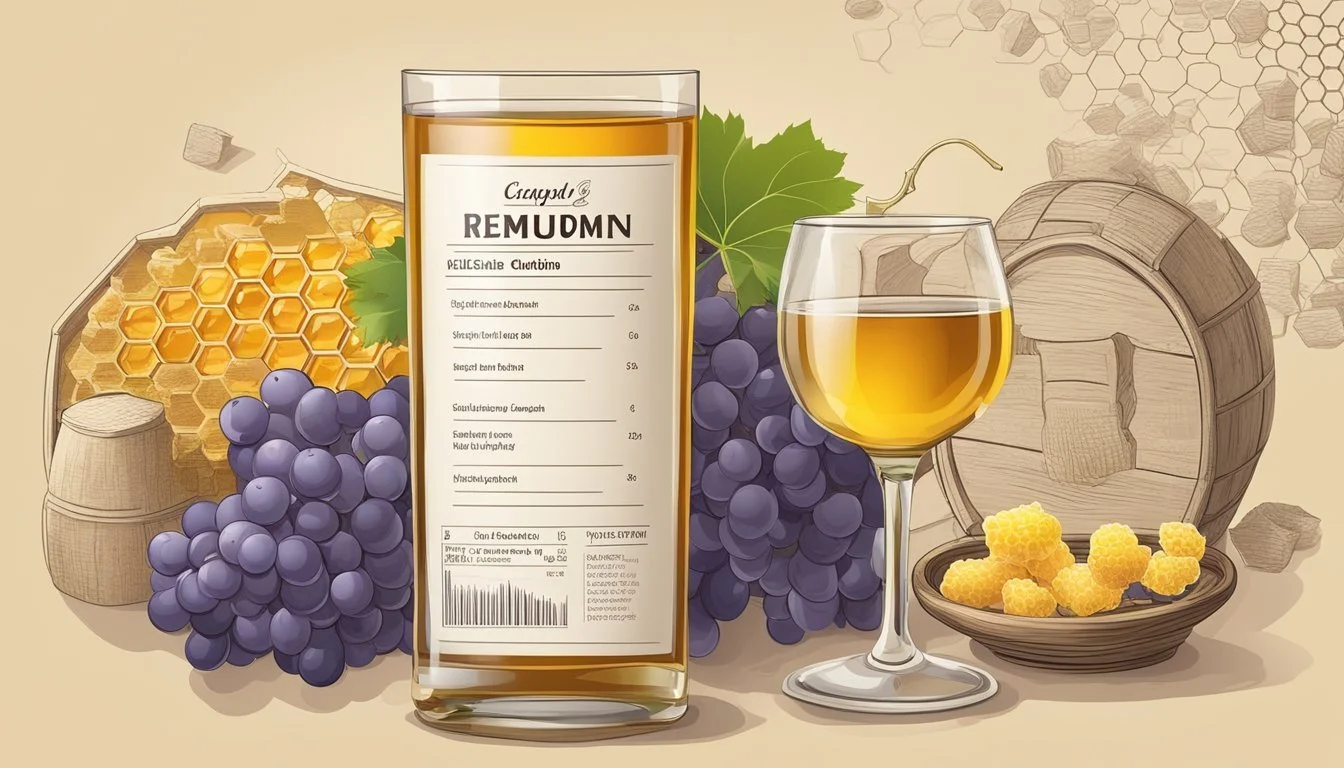Can Diabetics Eat Mead?
Understanding the Risks and Benefits
For those managing diabetes, understanding how different foods and drinks impact blood sugar levels is crucial. Mead, a traditional alcoholic beverage made from fermented honey, poses unique questions for those concerned about their insulin and glucose levels. Yes, diabetics can consume mead in moderation, but they need to be mindful of the potential impact on blood sugar.
Mead varies widely in sugar content and alcohol level, which can have distinct effects on glucose levels. Some meads are sweet and others are dry, with the latter generally being a better choice for individuals monitoring their blood sugar. It's essential to read labels and be aware of the carbohydrate content when choosing mead.
Being aware of portion sizes is also important. Small quantities, combined with a balanced meal focusing on lean proteins and vegetables, can help mitigate any rapid spikes in blood sugar. Always consult with a healthcare provider before making significant changes to your diet or drinking habits.
Understanding Diabetes
Diabetes is a chronic condition that affects how the body processes blood sugar. Key aspects include different types of diabetes, their management, and the impact of diet on blood sugar levels.
Types of Diabetes and Their Management
There are primarily two types of diabetes: Type 1 and Type 2. Type 1 diabetes occurs when the body cannot produce insulin, requiring daily insulin injections. In contrast, Type 2 diabetes is characterized by insulin resistance, where the body does not use insulin efficiently. Management involves lifestyle changes and medications to control blood sugar levels.
Type 2 diabetes often requires a careful balance of diet, exercise, and medication. Monitoring blood sugar levels is crucial for both types to prevent complications. Consistently high blood sugar levels can lead to long-term issues, including cardiovascular diseases and neuropathy.
The Effect of Diet on Blood Sugar Levels
Diet significantly influences blood sugar levels. Consuming high amounts of carbohydrates and sugars can cause spikes. To manage diabetes effectively, individuals should focus on low glycemic index foods, which release sugar slowly into the bloodstream.
Including fiber-rich foods helps control blood sugar levels. Fiber slows down sugar absorption, preventing rapid spikes. Hydration and regular meal timing are also essential for maintaining stable blood sugar levels. Diabetics should limit processed foods and high-sugar snacks to avoid sudden increases in blood sugar.
The Role of Carbohydrates, Proteins, and Fats in Diabetes
Carbohydrates directly affect blood sugar levels, making it essential for diabetics to monitor their intake. Complex carbohydrates such as whole grains have a steadier impact on blood sugar compared to simple sugars.
Proteins play a crucial role in maintaining muscle mass and overall health but have a minimal impact on blood sugar levels. Diabetics should opt for lean proteins like chicken, fish, and legumes.
Fats are necessary for a balanced diet but should be consumed in moderation. Healthy fats from sources like avocados, nuts, and olive oil are preferred. Avoiding trans fats and saturated fats can help in better managing diabetes and improving overall health.
Mead and Its Nutritional Profile
Mead is an ancient alcoholic beverage with a unique nutritional profile. It has carbohydrates from honey, can contain varying levels of alcohol, and involves considerations for those with diabetes.
What Is Mead?
Mead is an alcoholic beverage made by fermenting honey with water. It can also include various fruits, spices, grains, and hops, expanding its flavor profile. The alcohol content typically ranges between 8% and 20% ABV (alcohol by volume).
Historically, mead has been enjoyed for centuries and holds cultural significance in various regions. It is appreciated not just for its taste, but also for the antioxidants and trace vitamins from honey.
Sugar Content in Mead
The sugar content in mead comes primarily from the honey used in its production. A 3.5-ounce glass of mead contains around 10 grams of carbohydrates. Depending on the type and sweetness of the mead, these sugar levels can vary significantly.
For diabetics, monitoring carbohydrate intake is crucial to managing blood sugar levels. Mead contains no added sugars or sodium but does consist of natural sugars from honey. Thus, the carbohydrate content can impact blood glucose levels and requires careful consideration.
Alcohol's Impact on Diabetes
Alcohol in mead can have various effects on individuals, especially those with diabetes. High alcohol consumption can increase blood triglycerides and blood pressure, compounding the risk of obesity and additional complications for diabetics. Mead's alcohol content can range widely, from 8% to 20% ABV.
Moderate consumption may be acceptable for some, but it is important for diabetics to consult with healthcare providers. Alcohol can affect insulin sensitivity and blood sugar control, making it imperative to gauge individual tolerance and impact. Dysregulation of blood sugar should be avoided to maintain overall health.
Safe Alcohol Consumption for Diabetics
Diabetics must be cautious when consuming alcohol due to its impact on blood sugar levels and potential interactions with diabetes medications. Careful management can allow moderate drinking without significant risks.
Recommended Guidelines for Alcohol Intake
Diabetics are advised to check blood sugar levels before drinking. Alcohol can cause blood sugar to fluctuate, making it essential to drink only when levels are stable.
Women: Limit to 1 drink per day.
Men: Limit to 2 drinks per day.
Standard drinks include:
5 oz of wine (150 ml)
12 oz of beer (350 ml)
1.5 oz of hard liquor (45 ml)
Avoid drinking on an empty stomach to prevent rapid changes in blood glucose. Always consume alcohol slowly and with food.
Interactions Between Alcohol and Diabetes Medications
Certain medications for diabetes, such as insulin and sulfonylureas, can cause hypoglycemia when combined with alcohol. Drinking alcohol can increase the risk of dangerously low blood sugar levels.
Insulin: Alcohol can enhance insulin’s effect, leading to hypoglycemia.
Sulfonylureas: Combining with alcohol can also result in low blood glucose.
It’s critical to monitor blood sugar more frequently when drinking alcohol. Carry a source of fast-acting sugar, such as glucose tablets, to counter any unexpected drops in blood sugar levels. Avoid high-sugar alcoholic beverages like cocktails and sweet wines.
Dietary Considerations for Diabetics
Managing diabetes involves mindful eating practices that emphasize balance, portion control, and selecting specific types of foods that help regulate blood glucose levels. Effective dietary strategies can make diabetes management easier and more effective.
Balancing Macronutrients
Balancing macronutrients is crucial for diabetics. Carbohydrates have the most immediate impact on blood glucose levels. It's recommended that diabetics choose whole grains, legumes, and low-glycemic fruits to avoid spikes in blood sugar.
Protein sources such as lean meats, poultry, fish, tofu, and nuts support muscle repair and overall health without drastically affecting glucose levels.
Healthy fats, particularly monounsaturated and polyunsaturated fats, can help with satiety and support heart health. Examples include avocados, olive oil, and seeds. It's essential to avoid trans fats and to limit saturated fats found in high-fat meats and full-fat dairy products.
The Importance of Low-Glycemic Foods
Low-glycemic foods have a slower impact on blood sugar, making them beneficial for diabetics. Non-starchy vegetables such as broccoli, spinach, and cauliflower are excellent choices.
Whole grains like quinoa, barley, and brown rice release glucose slowly.
Fruits such as berries, apples, and pears often have a lower glycemic index than more sugary options like bananas or pineapples. Incorporating these foods helps maintain balanced glucose levels, thereby improving energy and reducing the risk of complications.
Incorporating Healthy Fats and Limiting Saturated Fat
Healthy fats are important for overall health and can make meals more satisfying. Sources of monounsaturated fats include olive oil and avocados, while polyunsaturated fats can be found in fatty fish like salmon, nuts, and seeds.
Diabetics should limit their intake of saturated fats to reduce the risk of heart disease. This means opting for low-fat or fat-free dairy products and avoiding high-fat meats. Preparing meals with oils high in unsaturated fats rather than butter or lard can make a significant difference.
Regularly incorporating these healthy fats, while limiting saturated and trans fats, supports cardiovascular health and aids in blood sugar management.
Alternative Beverage Options for Diabetics
Diabetics must choose drinks that are low in sugar and carbohydrates to help manage their blood sugar levels. Here, we explore non-alcoholic substitutes and sugar-free, low-carb options that can be enjoyed safely.
Non-Alcoholic Substitutes
Water is always the best choice. It is naturally hydrating and contains no carbohydrates or calories. Other good options include:
Infused Water: Adding slices of cucumber, lemon, lime, or herbs like rosemary or thyme can add flavor without adding sugar.
Herbal Tea: Unsweetened herbal teas, such as peppermint or chamomile, are free from carbohydrates and can be enjoyed hot or cold.
Milk Alternatives: Unsweetened almond milk, soy milk, and other plant-based milks are low in carbs. Some varieties are also fortified with vitamins and minerals.
Sugar-Free and Low-Carb Drinks
Diet Sodas can be a good option when craving a fizzy drink. It is important to choose ones labeled as sugar-free.
Sugar-Free Lemonades: Made with sugar substitutes, these can be refreshing choices.
Unsweetened Iced Tea: Both black and green teas offer a flavorful alternative without added sugars. Some brands also offer pre-brewed sugar-free variants.
Coffee: Black coffee or coffee with a splash of unsweetened almond milk can be good low-carb options. Be mindful of flavored syrups and creamers that often contain hidden sugars.
These choices provide variety and ensure diabetics can enjoy their beverages without adversely affecting their blood sugar levels.
Overall Health and Diabetes Management
Managing diabetes effectively involves addressing weight management, incorporating physical activity, and maintaining routine health assessments. Each plays a crucial role in overall diabetes management and influences factors like obesity, insulin resistance, and heart disease.
Weight Management Strategies
Maintaining a healthy weight can significantly impact diabetes management. Weight loss can improve insulin sensitivity and reduce A1C levels. Individuals with diabetes should focus on balanced meals that include non-starchy vegetables, lean proteins, and healthy fats.
Reducing carbohydrate intake can help control blood sugar levels. Portion control also aids in preventing overeating. Tracking food intake using a journal or app may prove beneficial.
Behavioral strategies, including mindful eating and avoiding emotional eating, are essential. These approaches support long-term weight maintenance and improve health outcomes.
Exercise and Diabetes
Regular exercise is vital for individuals with diabetes. Physical activity helps lower blood sugar levels, aids in weight loss, and reduces the risk of heart disease. Both aerobic activities, like walking and swimming, and resistance training, such as weightlifting, are beneficial.
Setting a goal of at least 150 minutes of moderate-intensity exercise per week is recommended. Consistency is key to seeing results and maintaining health benefits.
Exercise also enhances overall fitness and can improve mental health. Start slowly if new to exercise, and gradually increase intensity and duration to avoid injury.
The Importance of Regular Health Check-Ups
Frequent health check-ups are essential for people with diabetes. Regular monitoring of A1C levels, blood pressure, cholesterol, and kidney function can help manage diabetes effectively. Early detection of complications allows for timely intervention.
Annual eye exams are crucial to prevent diabetic retinopathy. Foot exams can detect early signs of neuropathy and other foot-related issues.
Health care providers may also review medication effectiveness and adjust treatment plans as needed. Staying informed and engaged in one's health ensures better disease management and overall well-being.






